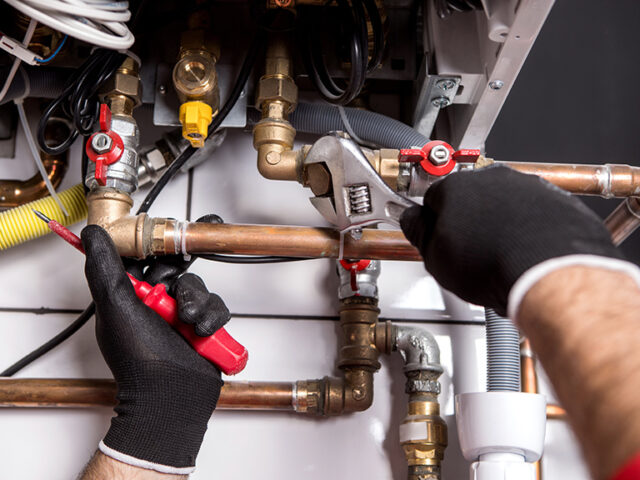Plumbing is one of those invisible home essentials that only grabs your attention when something goes wrong. But understanding the basics of your home’s plumbing system can help you stay ahead of common issues and potentially save you both time and money. This guide will walk you through the main components of your home’s plumbing, what each does, and how you can maintain it to keep everything running smoothly. Whether you’re a first-time homeowner or just looking to brush up on your home repair skills, here’s a comprehensive guide to demystify the pipes, valves, and drains that keep your household in good order.
1. The Basics of a Home Plumbing System
Your home’s plumbing system comprises two main parts: the water supply system and the drainage system.
- Water Supply System: This brings clean, fresh water into your home. The water supply typically comes from a municipal source or, in rural areas, a private well. Water is delivered under pressure to ensure it can reach every part of your house, from the upstairs shower to the outdoor garden hose. Pipes, fittings, and fixtures direct the water to various parts of the house, including the kitchen, bathrooms, and laundry room.
- Drain-Waste-Vent (DWV) System: This system removes used water, waste, and sewage from your home and is responsible for venting sewer gases out of the house. The DWV system operates through gravity, with sloped pipes carrying waste downward to your home’s main sewer line or septic tank.
Both parts of the system include various pipes, valves, and fixtures that make the flow of water in and out of the home possible. Let’s break down these components further.
2. Main Components of Your Plumbing System
Understanding the critical parts of your plumbing system can help you identify and troubleshoot issues more effectively. Here’s an overview:
Pipes
Pipes are the veins of your home’s plumbing. There are two main types:
- Supply Pipes: Supply pipes carry fresh water from your water source to various fixtures around the house. They are usually made of materials like copper, PEX (cross-linked polyethylene), or PVC (polyvinyl chloride). Copper and PEX are the most common for modern installations due to durability and flexibility, whereas PVC is often used in exterior applications or irrigation systems.
- Drain Pipes: These carry used water and waste out of your home. Most modern drain pipes are made of PVC or ABS (acrylonitrile butadiene styrene) plastic, which resists corrosion and is easy to work with.
Valves
Valves are essential control points in your plumbing system. They regulate the flow of water in your pipes. Key types include:
- Shut-Off Valves: Every fixture in your home should have its own shut-off valve, allowing you to cut off water to specific areas without disrupting the entire system. These are usually located under sinks, behind toilets, and near appliances like washing machines.
- Main Shut-Off Valve: This is the most critical valve in your home. In emergencies, like a burst pipe, you can stop the entire water supply by turning this off. It’s essential to know where this is located and to check it occasionally to ensure it’s functioning.
Fixtures and Appliances
Fixtures include faucets, sinks, toilets, showers, and bathtubs. These are the visible parts of the plumbing system where you interact directly with water. Appliances like washing machines, dishwashers, and water heaters also connect to the plumbing system.
- Water Heater: This appliance heats water for your showers, sinks, and other fixtures. Water heaters typically have a lifespan of 10-15 years and need periodic maintenance, such as flushing out sediment to improve efficiency and longevity.
- Septic System or Sewer Line: If you live in an urban area, waste exits your home through a sewer line that connects to the municipal sewage system. Rural homes often have septic tanks, which require periodic pumping and inspection to prevent buildup and avoid system failure.
3. Common Plumbing Issues and How to Troubleshoot Them
As a homeowner, it helps to know some of the frequent plumbing problems that arise and how to handle them. Here are a few you may encounter:
Low Water Pressure
Low water pressure can stem from several causes, including mineral buildup, leaks, or issues with your water supplier. If it’s limited to a single fixture, try cleaning the aerator or showerhead. If it’s a whole-house issue, check with your water provider or inspect your main water valve for potential leaks or blockages.
Leaky Faucets
Leaky faucets are usually caused by worn-out washers or cartridges inside the tap. Fixing these can be a straightforward DIY job with the right tools. Not only will fixing a leaky faucet save you water, but it can also help avoid larger problems like rust or water damage around the fixture.
Running Toilet
A running toilet often means the flapper inside the tank isn’t sealing properly, causing water to continuously flow. To fix it, inspect the flapper and replace it if worn out. Occasionally, the chain connecting the flapper to the flush lever may get tangled, so adjusting it can also help.
Clogged Drains
Clogs in sinks, showers, or toilets often result from hair, soap residue, grease, and food debris. Using a plunger or a drain snake is often enough to clear a clog. Avoid harsh chemical drain cleaners, as they can damage pipes over time. For persistent clogs, consider calling a professional plumber.

4. Essential Maintenance Tips for Your Plumbing System
Routine maintenance can keep your plumbing in top shape and help prevent costly repairs. Here’s a quick list of tips:
- Inspect Visible Pipes: Regularly check exposed pipes for signs of wear, corrosion, or leaks, especially in basements and under sinks.
- Flush Drains Periodically: Pour hot water and baking soda down your drains monthly to reduce buildup and maintain flow.
- Check Water Pressure: Use a gauge to test your water pressure periodically. Normal levels range from 40-60 psi. High water pressure can strain your pipes and lead to leaks.
- Service the Water Heater: Drain the tank annually to remove sediment, which improves efficiency and extends the appliance’s lifespan.
- Insulate Pipes: In cold climates, insulate pipes in unheated areas to prevent freezing and bursting.
5. When to Call a Professional Plumber
While DIY maintenance can solve many issues, certain situations warrant professional expertise. Here are some cases when you should contact a plumber:
- Sewage Backups: These are serious and can lead to contamination of your home.
- Burst Pipes: If a pipe bursts, turn off the main shut-off valve and call a plumber immediately.
- Major Leaks: If you see signs of water damage on walls or ceilings, you may have a hidden leak that needs prompt professional attention.
- Persistent Low Water Pressure: If your entire house experiences low water pressure, it could indicate an issue with the main line, which requires professional inspection.
6. Learning More About Your System
You don’t need to be an expert, but it’s helpful to familiarize yourself with the plumbing diagrams for your house. Many home inspection reports come with a plumbing overview, or you can have a licensed plumber create one for future reference. Knowing how water flows in and out of your home will make it easier to identify issues before they turn into costly repairs.
For more in-depth information about water lines and plumbing, check out https://hi-techplumbingandair.com/plumbing/water-lines/.
Final Thoughts
Understanding your home’s plumbing system doesn’t need to be overwhelming. With this guide as your foundation, you’ll have the knowledge to troubleshoot minor issues and communicate effectively with a professional when needed. Regular maintenance, timely repairs, and knowing the basics will ensure that your plumbing system serves you well for years to come.










